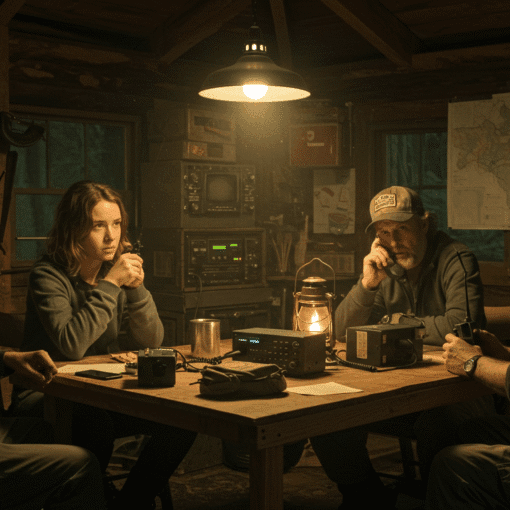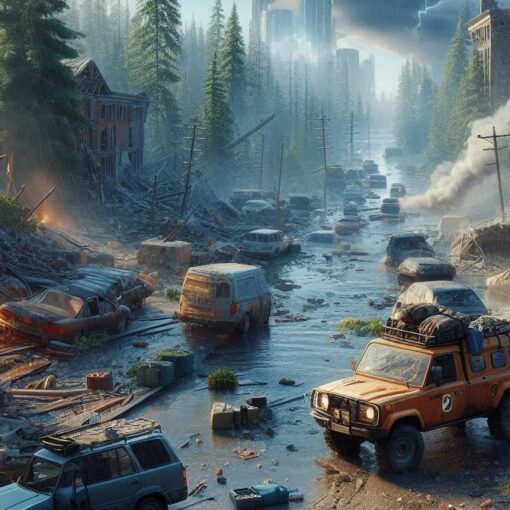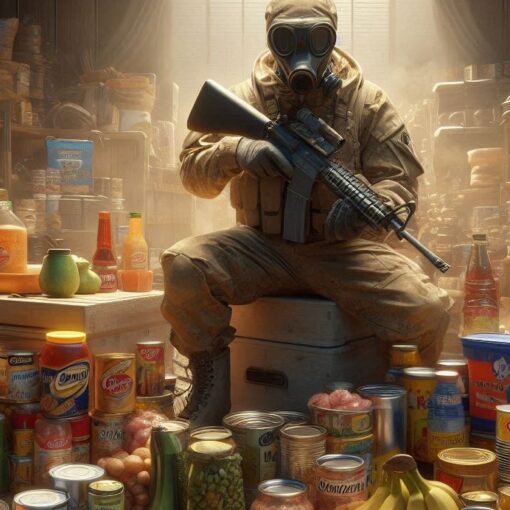Please Note: This post may contain affiliate links. If you click one of them, we may receive a commission at no extra cost to you. As an Amazon Associate, I earn from qualifying purchases.
Top Takeaways and Key Concepts
- Build a simple emergency plan so everyone knows where to meet and what to do.
- Gather supplies gradually to stay prepared without overspending.
- Use affordable tools like flashlights, multipurpose gear, and dollar-store first-aid items.
- Learn free emergency skills from online resources and community workshops.
- Review and update plans regularly to keep supplies fresh and contact info current.
Summary of This Article
This article explains how anyone can prepare for emergencies on a budget using simple, practical steps. It encourages building a basic family plan, collecting essential supplies over time, and using low-cost tools like flashlights and first-aid kits. It highlights the importance of learning free safety skills, using community resources, and practicing readiness drills. Finally, it reminds readers to regularly review and update their emergency plans to stay prepared and confident in unexpected situations.
Short Video Version of this Article
Have you ever thought about what you would do if something unexpected happened? A large storm could hit, the power could go out, or you can unexpectedly lose your phone charger. That’s scary, isn’t it? It can be really scary.
But you know what? It doesn’t have to spend a lot to get ready. You can feel safe and ready in basic, cheap ways. Let’s get started!

Make a list of the things you could need that are important. Think about things like food, drink, and any medicine you might need. You don’t have to buy everything at once. Take your time getting supplies. You can save money over time by buying a few additional cans of soup or a big bottle of water here and there.
Next, think about your house. Do you own any flashlights? If you don’t have any, you might want to get some. Most of the time, they don’t cost too much. If you have them, you could even use candles. Just make sure to be cautious with them!
What if you and your family or friends made a backup plan? If you ever lose each other, agree on a place to rendezvous. A nearby park, for example, will do. That way, everyone knows where to go if they can’t get in touch with each other.
Spend a few minutes going over what to do in different situations. It doesn’t have to be a big event; it may just be a fun game for the whole family. This makes everyone feel better in case something goes wrong.
A smart plan can truly help you stop worrying. It will feel great to be in charge. You know that even small things may make a tremendous difference? So, let’s get ready together!
Start with a Plan: Your Emergency Blueprint
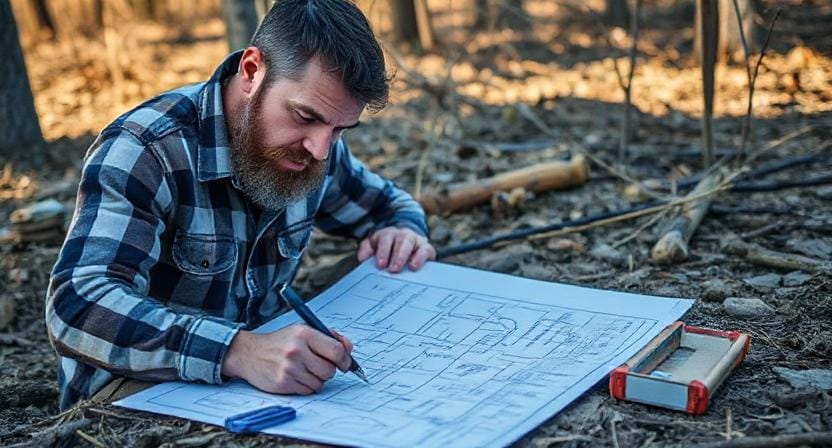
First things first: having a plan is essential. Think of it like mapping out a road trip—you wouldn’t just hop in the car and hope for the best, right? So grab a pen and paper (or your favorite note-taking app) and jot down key details.
Have you thought about where you’d go if you had to leave home? What if a big storm hits or something else happens? It’s a good idea to have a plan.
Maybe you have a friend or family member nearby who can welcome you. That could be so comforting. Talk to them about it, so you both know what to do.
Make sure everyone at home knows this plan. Communication really helps. You could even have a family meeting. Yes, those still work! Gather everyone and chat about how you’d handle an emergency together. It’s kind of fun to share ideas, and it gets everyone involved.
Don’t forget about your pets! They’re part of the family, right? Think about what they’ll need if things get tough. Do they have food, water, and carriers? Where will they go? Making a plan for them is super important, too.
If you have to leave quickly, you want to know your furry friends are safe. Pack some extra supplies for them in your emergency kit. A little bit of preparation means a lot of peace of mind. You got this!
Build Your Emergency Kit: Essentials on a Budget

Next up is creating an emergency kit. Now, I know what you’re thinking: “Kits must cost a fortune!” But that’s simply not true! You can build one piece by piece without emptying your wallet.
Start with basics like water and non-perishable food items—think canned goods or granola bars. These don’t have to be gourmet; just make sure they’re something you’d actually eat when hunger strikes!
Let’s chat about first-aid supplies. You don’t need anything fancy, really. A simple kit can have everything you need. Head over to your local dollar store. They usually have awesome stuff at low prices. Grab some adhesive bandages for cuts. Antiseptic wipes are great, too. They help keep things clean. And don’t forget over-the-counter pain relievers for those pesky headaches or sore muscles. Easy peasy!
Tools are super important too. A flashlight is a must-have, especially during power outages. Imagine it’s dark, and you can’t see! A good flashlight with extra batteries makes everything feel safer.
If you’re feeling adventurous, think about getting a multipurpose tool. These things are cool! They have screwdrivers, knives, and more, all in one compact size. Perfect for your bag. You never know when you might need to fix something or cut a little rope.
Just like that, you’re building a little safety net for yourself. It’s a comforting thought, isn’t it? Plus, knowing you’re ready for anything is a great feeling.
Stay Informed: Knowledge Is Power

Being ready isn’t just about having things; it’s also about knowing what to do should anything goes wrong. Thank goodness you don’t have to spend a lot of money on school!
Use free materials that you might get online or at community centers in your area. FEMA (Federal Emergency Management Agency) and other websites have a lot of useful information on how to get ready for different types of calamities.
Have you considered about going to some workshops? Many groups in your area provide lessons on subjects like CPR and how to respond to disasters. Isn’t it cool? You can gain useful talents that could aid someone in need. A lot of these classes don’t cost anything or very little. You should definitely look into it!
It only takes an afternoon to make a difference. You also meet new folks who care about the same things. It feels good to be connected, doesn’t it?
You may also find a lot of information on social media. It sounds easy, but it works! Follow accounts you trust that give advice on how to be ready for emergencies. A single post can give you a brilliant idea. You know, like, “Oh! I never thought about that! It’s remarkable how fast information travels on the internet.
You might uncover some useful hacks or reminders that you didn’t know you needed. You may learn a lot just by scrolling through your feed. So why not try it? You’re doing a terrific job of being up to date and prepared.
Get Creative with Community Resources
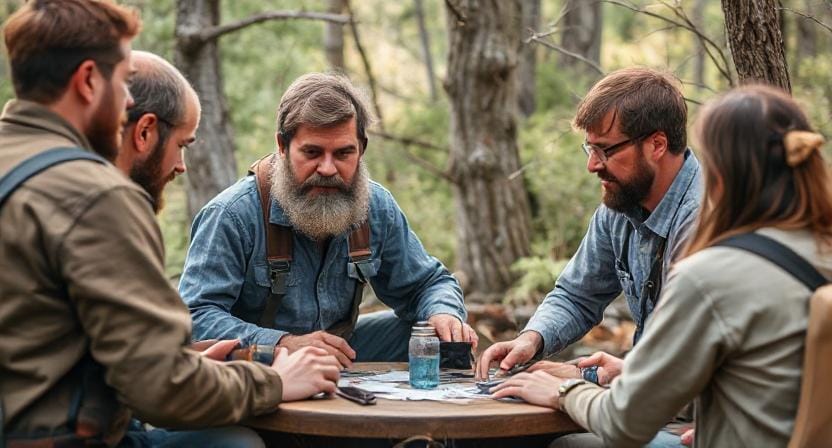
When it comes to community resources, use your local networks for help! There are groups in many areas that focus on being ready for emergencies. These may be fantastic places to meet people who are interested in the same things as you and learn new things together.
Have you heard about barter systems that are used in your area? They can be quite cool! Think about giving items to your neighbors in exchange for something else. Why not trade with someone who has extra flashlights and someone who has canned goods? It’s a fun method to give away what you have. You don’t have to spend a lot of money, because everyone helps each other.
Trust me, sharing materials like this makes things easier. You save money and make your community stronger. Also, it feels nice to help, right?
Another good choice is a thrift store. You might be shocked by what you find! People give away a lot of things that are still in fine shape. You may get clothes, equipment, or even camping gear for only a few dollars. It feels like you’re looking for treasure, and you can find some real diamonds.
You might find the perfect bag or a warm blanket for when you need it. You never know! It doesn’t have to cost a lot to be ready. It’s all about being wise with what you have. Keep looking; you might uncover something that makes things a little simpler.
Maintain Your Readiness: Regular Check-Ins
Finally—and this part’s super important—don’t let your hard work go stale! An emergency plan is only effective if it’s kept up-to-date. Set reminders every few months to review your kits and plans; make sure everything’s still functional and relevant.
Hey there! So, you know how sometimes life gets really busy? Yeah, it’s a lot, right? But taking a moment to check expiration dates on food is a good idea. It’s like, you open a can of beans and then… surprise! It’s a science project instead of dinner. Gross, right?
And the fridge! Don’t even get me started on leftovers. It’s a little scary sometimes. Just peek in, see what’s there. Toss anything funky. Honestly, nobody wants a mystery when you’re just trying to eat something quick.
About staying connected, have you noticed how everyone moves around so much? It’s wild! Friend’s number changes, family moves, and suddenly, someone’s gone missing from the group chat. Keeping everyone’s contact up to date feels like a chore, but it’s really helpful during those “Oh no, what do we do now?” times. Making sure you have the right numbers means you can reach out when it really matters.
Staying ahead of these things? It’s really nice. Feels good, you know? Like a warm cup of coffee on a chilly day. Not just for you, but for everyone around you too.
When you’re organized, it makes life easier. And hey, it lightens the load. Just a little bit of effort makes a big difference—like not having to panic when you unexpectedly need something or someone.
So, maybe next time you’re in the kitchen or scrolling through your contacts, just take a sec. It’ll make everything feel a bit smoother. Plus, you’ll have peace of mind, and who doesn’t want that? It’s like a cozy blanket on a cold day. Just makes everything better.
Being prepared for emergencies doesn’t have to be expensive or complicated. By building a simple family plan, collecting supplies over time, and staying informed, anyone can boost their safety and confidence. Consistent check-ins and community support also help make preparedness easier and more affordable for every household.
Frequently Asked Questions
What is the first step in emergency preparedness?
The first step is creating a simple plan that includes where your family will meet and how you will communicate during an emergency.
How can I build an emergency kit on a small budget?
Start by buying basic items like water, canned food, and first-aid supplies gradually over time to avoid overspending.
What affordable tools should I include in my emergency supplies?
Include low-cost essentials such as flashlights, batteries, candles, and multipurpose tools to handle basic emergencies.
How can I learn emergency skills for free?
You can access free resources online or attend community workshops that teach first aid, disaster response, and safety planning.
Why is it important to review my emergency plan regularly?
Plans and supplies can become outdated, so reviewing them every few months ensures everything is still useful and up to date.
How can neighbors help with emergency preparedness?
Neighbors can share resources, exchange skills, and offer support, creating a stronger and more prepared community.
What should I do to keep my emergency supplies organized?
Store items in labeled containers, check expiration dates, and make a simple inventory list to keep everything easy to find when needed.
Suggested Resources:
Emergency Preparedness Guide
https://www.ready.gov/prepare
FEMA – Prepare Your Family
https://www.fema.gov/press-release/20211013/fema-prepare-your-family
American Red Cross – Disaster Preparedness
https://www.redcross.org/get-help/how-to-prepare-for-emergencies.html

Kevin Collier is a seasoned outdoor enthusiast and writer for Trekbug.com, specializing in outdoor adventures, survival strategies, and prepping insights. With a deep love for nature and a commitment to self-sufficiency, Kevin empowers readers to embrace the wilderness confidently. He shares valuable tips, practical techniques, and inspiring stories, helping both novice and experienced adventurers develop essential skills for surviving and thriving in the great outdoors.


